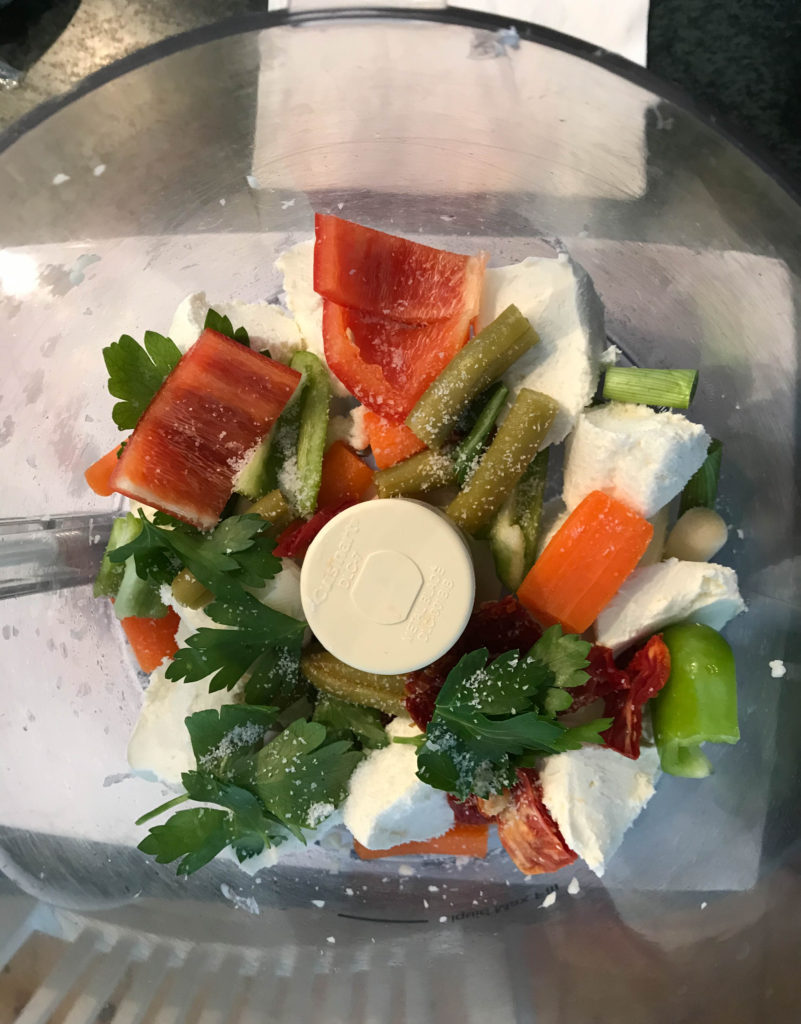
Schmears are a doddle, as Jamie Oliver would say. Or as I like to think he would say, since he was originally talking about gravlax, which is a lot harder to make than a schmear. But perhaps you are unfamiliar with the word? Has it not spread beyond the confines of Manhattan, to inflect yet another new Yiddishism on American food-speak?
If not, then let me help it out – a schmear is something you spread. Perhaps, but not necessarily, on a bagel. I first encountered the word on the lips of my grandpa Maier, who was watching me paint a fence – or, rather, put paint on a fence. “Are you a painter,” he asked me, “or a schmearer?”
From the context, it was clearly better to be a painter. Yet I grew up to be a schmearer. So it goes.
I love making schmears. They are a perfect illustration of one of my major culinary precepts – you can almost always make something better than what you can buy, mainly by using More of the Expensive Stuff. So here, for example, is a lox schmear that is, by weight, half lox. An olive spread made with Castelvetrano olives. An Everything Schmear that uses nigella seeds, if you can find them, as well as the pedestrian sesame and poppy.
My goal is to keep adding schmears to this site until every bagel in the world has its perfect spread. Or I might just stop at 50, which is one schmear a week for a year, less a vacation someplace warm enough to melt cream cheese: 50 Schades of Schmear. I’m up to five, so far, that I feel are ready to share, with a few still in the can, so pop back anytime if your bagel looks too naked.
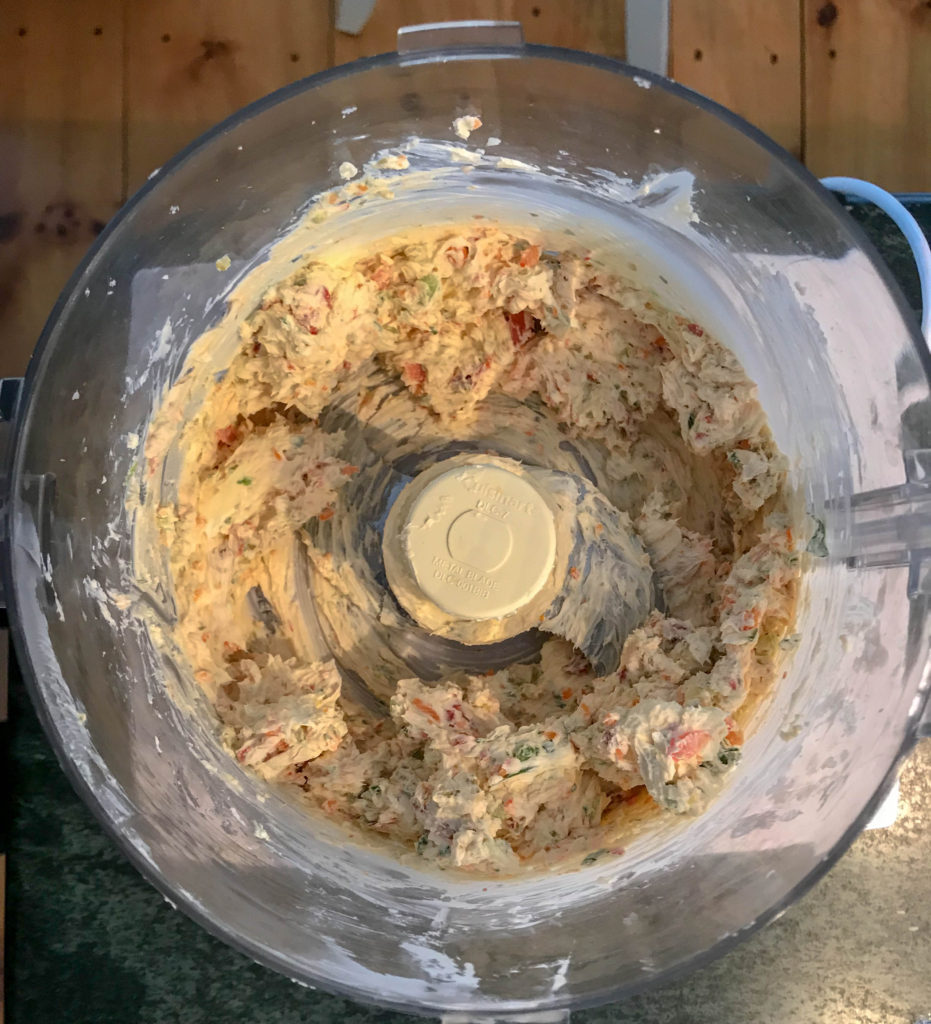
Most of the spreads sold cavalierly from the refrigerated case at your local bagel bakery will bow humbly before the schmears you can make yourself, using more and better ingredients. These Three Classic Schmears – lox, olive and vegetable – will cover all the bagel bases, and rank very high on the deliciousness-to-effort scale. My generic advice: use full fat cream cheese, and do not overprocess. When in doubt, leave the chunks.
Three Classic Schmears
Your own overstuffed version of three classic schmears.
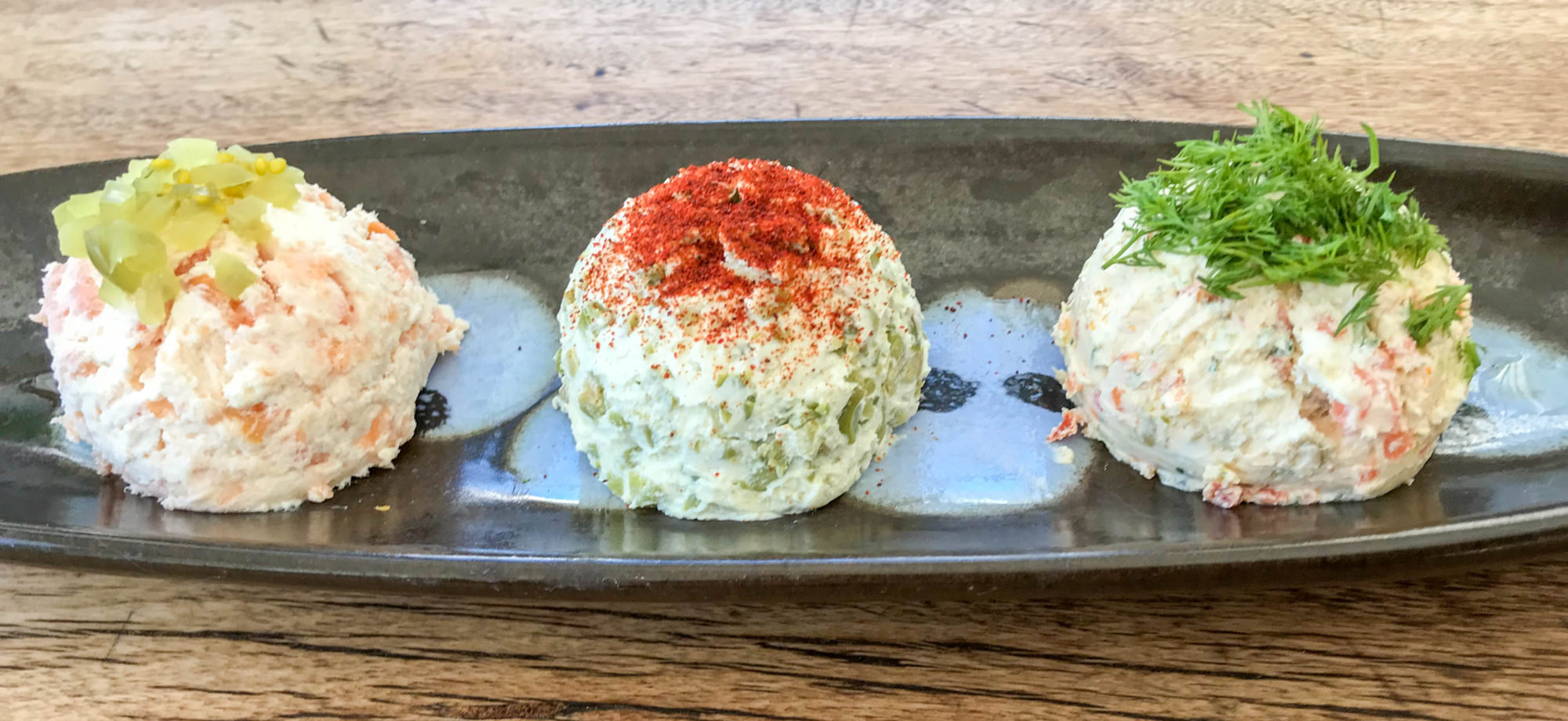
Add the cream cheese, in thumbtip-sized chunks, to the bowl of a food processor. Drape in the salmon and add the pinch of white pepper. Cover and pulse 10 or 12 times, scraping down as needed. Don't overprocess; you want chunks of lox. Using a rubber spatula, fold everything out into a bowl. You're done. Except for a caper and red onion - or pickled green tomato, or whatever - garnish.
The Castelvetrano olives are a vibrant green and have a nice, fresh taste. The downside is, they nearly always come unpitted and are thus a pain to slice (though you get to chew on the pits). You can substitute Manzanilla or any other nice green olive of your choice. As with the lox schmear, just add nubs of the cream cheese to your food processor, tip in the rest of the ingredients, pulse a few times, and enjoy. This is nice garnished with smoked paprika.
Finally, a schmear that takes a tiny bit of prep. It's optional, but recommended, that you soften the carrot slices by parboiling them for two or three minutes, though you might prefer their native crunch.
With the food processor running, drop the half clove of garlic down the tube to auto-mince. Open up the bowl, chunk in the cream cheese and add the other ingredients. Do not overblend; I use from 8 to 12 very quick pulses, with a scrapedown towards the end. Garnish with fresh or dried dill. This is a family favorite, both alone and as a foundation for sliced lox.
Ingredients
Directions
Add the cream cheese, in thumbtip-sized chunks, to the bowl of a food processor. Drape in the salmon and add the pinch of white pepper. Cover and pulse 10 or 12 times, scraping down as needed. Don't overprocess; you want chunks of lox. Using a rubber spatula, fold everything out into a bowl. You're done. Except for a caper and red onion - or pickled green tomato, or whatever - garnish.
The Castelvetrano olives are a vibrant green and have a nice, fresh taste. The downside is, they nearly always come unpitted and are thus a pain to slice (though you get to chew on the pits). You can substitute Manzanilla or any other nice green olive of your choice. As with the lox schmear, just add nubs of the cream cheese to your food processor, tip in the rest of the ingredients, pulse a few times, and enjoy. This is nice garnished with smoked paprika.
Finally, a schmear that takes a tiny bit of prep. It's optional, but recommended, that you soften the carrot slices by parboiling them for two or three minutes, though you might prefer their native crunch.
With the food processor running, drop the half clove of garlic down the tube to auto-mince. Open up the bowl, chunk in the cream cheese and add the other ingredients. Do not overblend; I use from 8 to 12 very quick pulses, with a scrapedown towards the end. Garnish with fresh or dried dill. This is a family favorite, both alone and as a foundation for sliced lox.
As a bagel purist, I viewed the arrival of the Everything Bagel with suspicion. Poppy seed and pumpernickel are still my favorites, but this Everything Schmear is killer on both of them. Don’t wait on finding nigella seeds to make this, but do hunt them down at some point (Penzey’s is a great online source). They add a smoky, exotic flavor – the schmear equivalent of putting on eye shadow.
Everything Schmear
A schmear version of the Everything Bagel.

Dry-roast the onions in a non-stick pan over medium high heat (use no oil) about 8 minutes, or until they are brown in spots. Add the rest of the ingredients to the pan (except for the cream cheese!), stir once or twice, and immediately remove from heat.
Add the cream cheese, in thumbtip-sized chunks, to the bowl of a food processor. Scrape in the onion and seed mixture and pulse 10 or 12 times, scraping down with a rubber spatula as needed. Do not overprocess; you want some oniony chunks. This is gorgeous overkill on an everything bagel.
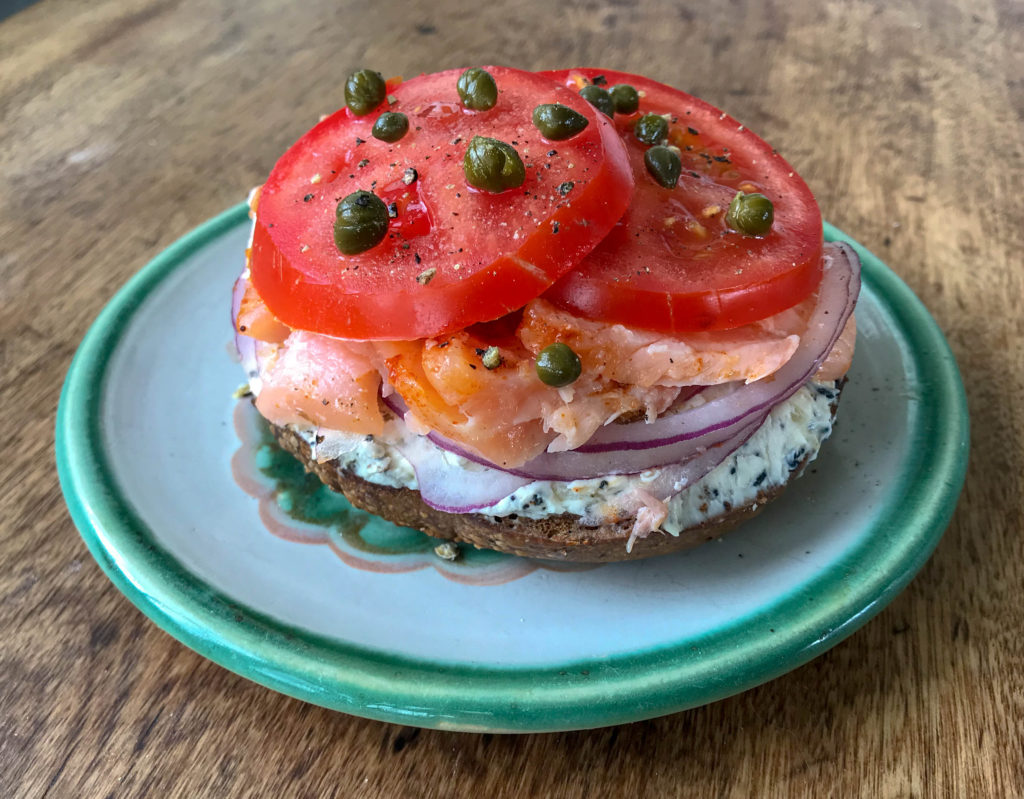
Ingredients
Directions
Dry-roast the onions in a non-stick pan over medium high heat (use no oil) about 8 minutes, or until they are brown in spots. Add the rest of the ingredients to the pan (except for the cream cheese!), stir once or twice, and immediately remove from heat.
Add the cream cheese, in thumbtip-sized chunks, to the bowl of a food processor. Scrape in the onion and seed mixture and pulse 10 or 12 times, scraping down with a rubber spatula as needed. Do not overprocess; you want some oniony chunks. This is gorgeous overkill on an everything bagel.

The inspiration for this Horseradish/Beet Schmear was, of course, the mysteriously red horseradish that my family never purchased, choosing instead the plain. The reason, my grandma said, was that the red version contained beets – as if that were cheating. I expect it was tinted so that it looked nice next to gefilte fish, which is about the color of oatmeal; both jarred versions taste virtually the same. But beets, of course, do have a flavor of their own, and a great native sweetness to go with the nose-clearing heat of the freshly-grated root. Still, it is the amazing color of the beet version that makes it nearly irresistible.
Horseradish/Beet Schmear
A wildly colorful, nose-clearing schmear that can sneak equally well into roast beef sandwiches and salmon sushi.
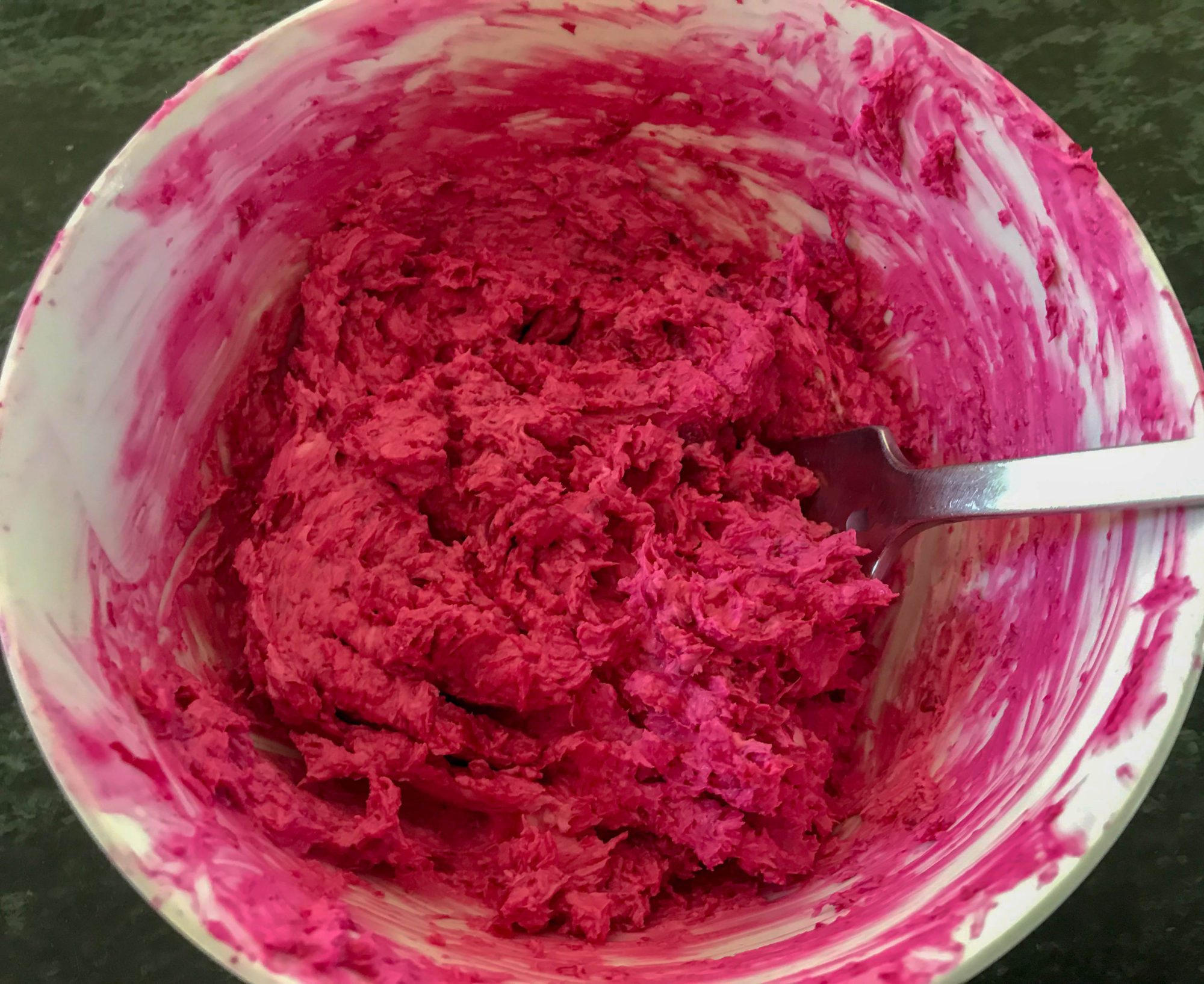
Before you dump everything in a food processor and hit Go (the nuclear option), consider using the bowl and fork method, as pictured above. The reason being: fresh horseradish varies widely in heat, and the cut ends lose their potency first. Also, fresh raw beets are reliably sweet, but if you have purchased them pre-cooked in a little plastic bag, expect nothing more than neutrality. So, here's what I recommend:
Cook your own beets. Preheat the oven to 425, trim the roots and tops, wash and then oil the outsides, and place them in a small baking dish lined with aluminum foil. Roast until easily penetrated with a fork, about 45 minutes to an hour. Remove and, once cool, rub the skins off with your hands under a trickle of cold running water, with maybe a little assistance from a paring knife. Pick a nice, medium-sized specimen and microplane it into a bowl. It will be more granulated than shredded, quite juicy, and stain everything it touches.
Slice off about a half-inch chunk of the fresh horseradish to start with, pare off the peel, and microplane when you are ready to mix.
Somewhere along in here, take your cream cheese out of the fridge and let it rest at room temperature for a half-hour or so, to soften up. When all is ready, place the cream cheese in a small bowl and stir in some of the horseradish, tasting frequently until you get to the heat you desire. For the plain horseradish version, add the salt, vinegar and dill, stir up and adjust again, according to your taste. If you are forced to use jarred horseradish, omit the extra vinegar.
For the beet version - which is amazingly colorful, and is meant to be a little sweet/hot - stir in the grated beet and salt, then taste. If you used canned or prepackaged cooked beets, you might want to add a bit of sugar.
The only remaining question is - what do you do with this amazing stuff? Exactly how is it suited to a bagel? My original vision involved an egg bagel, either schmear, a pile of thinly-sliced roast beef and some pickled red onion. If you'll be patient, I'll make one soon and take a picture. But in the heat of the moment, almost all of this recipe went into a sushi platter. I mated up the beet schmear, soy-cured salmon, avocado, and cucumber into some nori and California rolls. They were great, but it was an ugly win - the schmear, in this case, lived up to its name. I'm going to try again with a pastry bag, and a little more practice. Some things that you love are still best not revealed in public, or at least not until they're properly dressed.
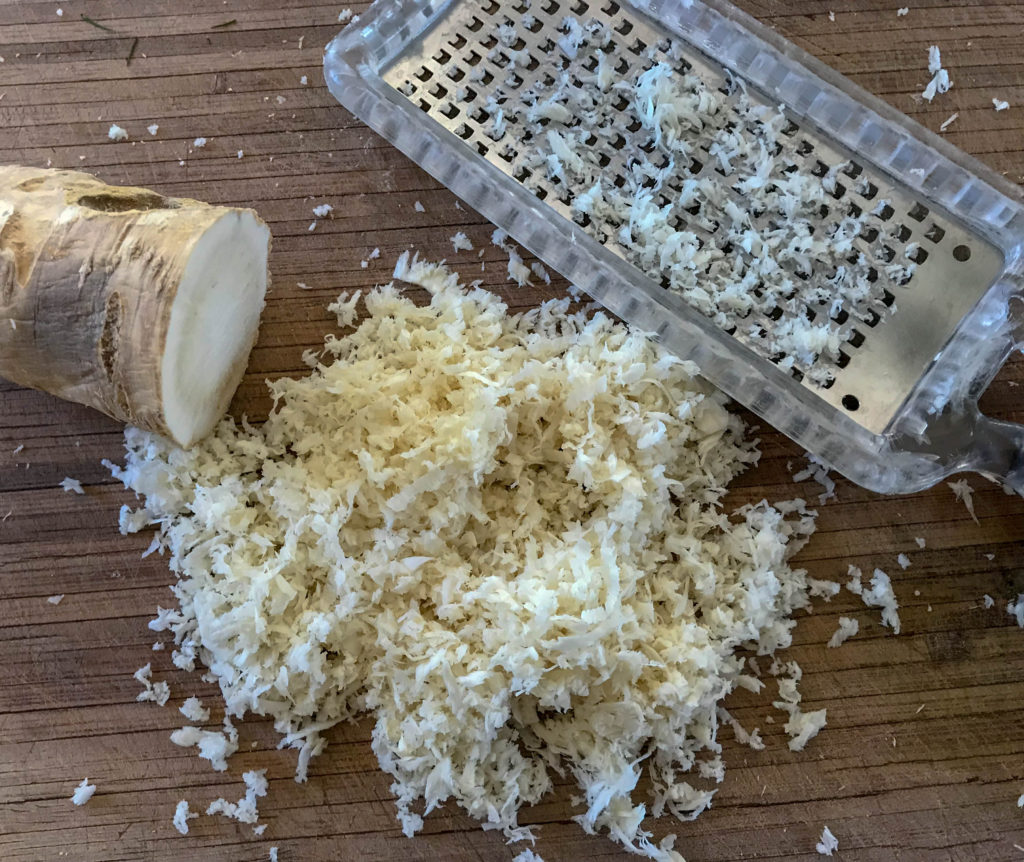
Ingredients
Directions
Before you dump everything in a food processor and hit Go (the nuclear option), consider using the bowl and fork method, as pictured above. The reason being: fresh horseradish varies widely in heat, and the cut ends lose their potency first. Also, fresh raw beets are reliably sweet, but if you have purchased them pre-cooked in a little plastic bag, expect nothing more than neutrality. So, here's what I recommend:
Cook your own beets. Preheat the oven to 425, trim the roots and tops, wash and then oil the outsides, and place them in a small baking dish lined with aluminum foil. Roast until easily penetrated with a fork, about 45 minutes to an hour. Remove and, once cool, rub the skins off with your hands under a trickle of cold running water, with maybe a little assistance from a paring knife. Pick a nice, medium-sized specimen and microplane it into a bowl. It will be more granulated than shredded, quite juicy, and stain everything it touches.
Slice off about a half-inch chunk of the fresh horseradish to start with, pare off the peel, and microplane when you are ready to mix.
Somewhere along in here, take your cream cheese out of the fridge and let it rest at room temperature for a half-hour or so, to soften up. When all is ready, place the cream cheese in a small bowl and stir in some of the horseradish, tasting frequently until you get to the heat you desire. For the plain horseradish version, add the salt, vinegar and dill, stir up and adjust again, according to your taste. If you are forced to use jarred horseradish, omit the extra vinegar.
For the beet version - which is amazingly colorful, and is meant to be a little sweet/hot - stir in the grated beet and salt, then taste. If you used canned or prepackaged cooked beets, you might want to add a bit of sugar.
The only remaining question is - what do you do with this amazing stuff? Exactly how is it suited to a bagel? My original vision involved an egg bagel, either schmear, a pile of thinly-sliced roast beef and some pickled red onion. If you'll be patient, I'll make one soon and take a picture. But in the heat of the moment, almost all of this recipe went into a sushi platter. I mated up the beet schmear, soy-cured salmon, avocado, and cucumber into some nori and California rolls. They were great, but it was an ugly win - the schmear, in this case, lived up to its name. I'm going to try again with a pastry bag, and a little more practice. Some things that you love are still best not revealed in public, or at least not until they're properly dressed.

